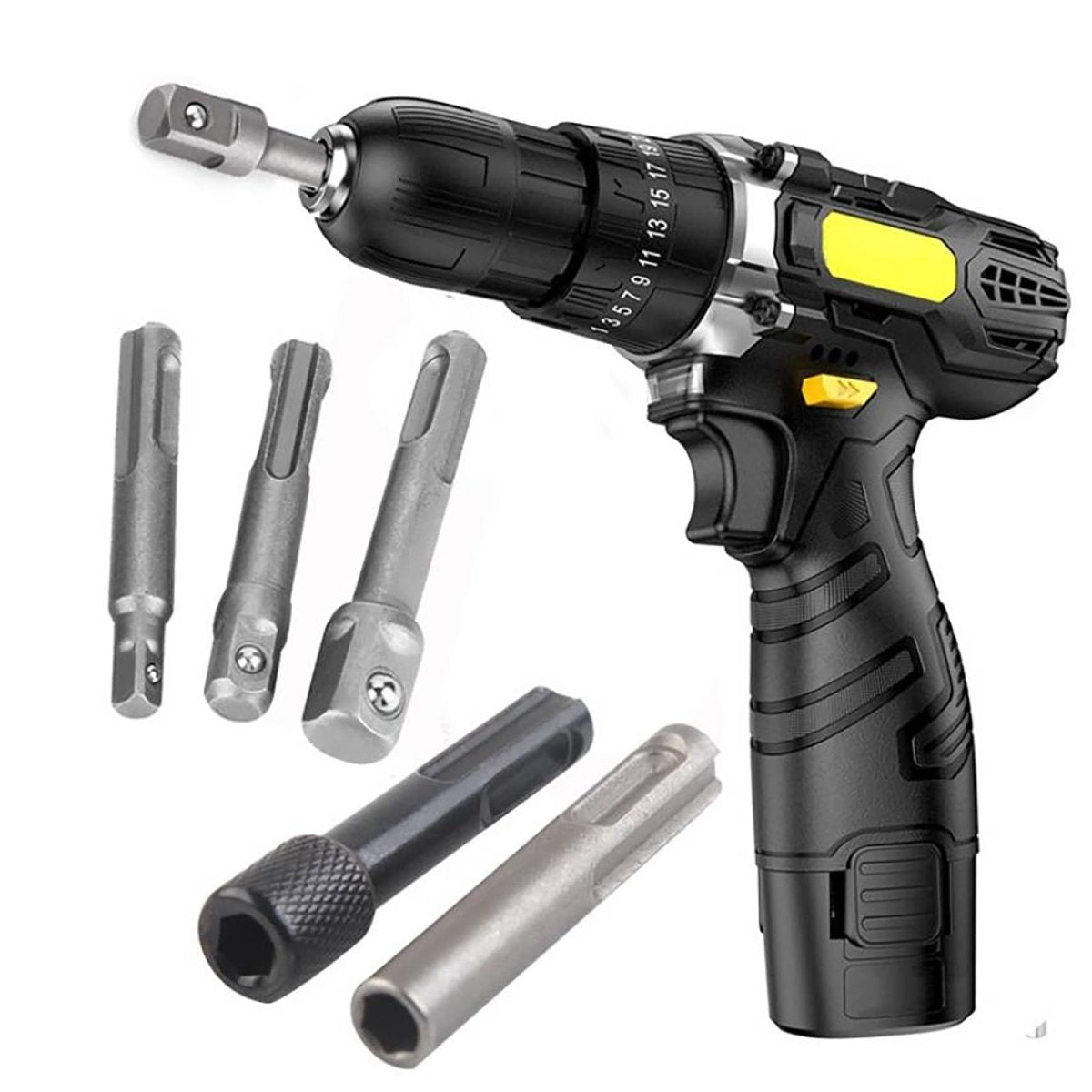Circuit Breaker Introduction
In light industrial and commercial electrical systems, protecting equipment and people from fault currents is non-negotiable. Two common protective devices you'll encounter are the Motor Circuit Breaker and the MCCB (Molded Case Circuit Breaker). On paper, they both interrupt current, but that similarity hides important differences in how they operate, where they belong in a system, and how they should be specified.
This article dives deep: we'll compare technical characteristics, look at trip behavior, show side-by-side tables, cover relevant standards, and provide practical, field-tested tips for selecting, installing, and maintaining either device.
What is a Motor Circuit Breaker?
A Motor Circuit Breaker is a protective device purpose-built for motor protection. It combines the functions of short-circuit protection and thermal overload protection and is tuned to handle the unique demands of motors — particularly inrush (starting) currents, temporary stalls, and unbalanced phases.
Key features of Motor Circuit Breakers
- Adjustable thermal overload: Allows setting of the trip current close to the motor nameplate full-load current (FLC).
- Short-circuit protection: Fast interruption for downstream faults.
- Motor-friendly trip curves: Designed to tolerate brief high inrush currents without nuisance tripping.
- Phase-failure sensing/phase imbalance protection: Many motor breakers detect and react to loss of phase or severe imbalance to protect windings.
- Trip integration: Often used with or in place of motor starters and contactors in compact motor control solutions.
Example product: the GV2ME10C-08C Motor Circuit Breaker (0.1–32A) is typical of compact motor breakers used for small to medium motors — it offers adjustable current settings and protection geared specifically for motor loads.

What is an MCCB?
MCCB stands for Molded Case Circuit Breaker. It's a general-purpose protective device that protects circuits, feeders, transformers, and equipment against overloads and short circuits. MCCBs come in a wide current range and with a variety of trip curves, and they are a mainstay in distribution and protection panels.
Typical MCCB characteristics
- Wide current range: From tens of amperes to thousands, depending on the model.
- Interchangeable trip units: Fixed thermal-magnetic or adjustable electronic trip units are common.
- Used for distribution: Often placed at the head of a distribution feeder or panelboard to protect cables and downstream devices.
- Robust construction: Designed for high breaking capacity & repeated switching.
While you can use an MCCB to protect motors, unless it has motor-specific protection features (like overload adjustments and motor trip curves), it may not be the best fit where frequent starts and high inrush currents occur.

Key Differences — Motor Circuit Breaker vs MCCB
Below are the practical, real-world differences you should consider when choosing one over the other.
Motor Circuit Breaker (MCB for motors)
- Optimized for motor starting currents (inrush tolerance).
- Adjustable thermal overload to match motor FLC.
- Commonly integrated into motor control centers or starter assemblies.
- Ideal for protecting motors, pumps, fans, and compressors.
MCCB
- General-purpose protective device for circuits and feeders.
- Wide current and interrupting capacity options.
- Better for distribution, not optimized by default for motor starting.
- Often used ahead of branch circuits and large equipment.
Short takeaway: When the load is a motor (with startup inrush and potential phase loss), a Motor Circuit Breaker is usually the better, more targeted choice. Use MCCBs where broader circuit protection and high interrupting capacity are required.
Detailed Comparison Table
| Feature | Motor Circuit Breaker | MCCB (Molded Case Circuit Breaker) |
|---|---|---|
| Primary Purpose | Dedicated motor protection (overload, short-circuit, phase failure) | General circuit and distribution protection |
| Typical Current Range | Small to medium motors — commonly 0.1A to 63A (compact models 0.1–32A) | Wide range — from tens to thousands of amps (depends on model) |
| Trip Behavior | Motor-tuned curves to allow inrush currents | Standard thermal-magnetic or electronic trip curves |
| Adjustability | Overload setpoint adjustable to motor nameplate | Some models are adjustable; electronic trip units offer more flexibility |
| Phase Loss/Unbalance Protection | Often built-in | Not standard unless an enhanced trip unit is provided |
| Typical Applications | Individual motor circuits, motor control centers, and pump/fan protection | Main feeders, distribution panels, protection for transformers, and large equipment |
| Cost Consideration | Cost-effective for motor protection | Higher cost for high-capacity devices; justified for distribution roles |
| Mechanical Life & Interrupting Capacity | Good for rated use; not always available in very high interrupting ratings | Designed for higher interrupting capacities and regular switching operations |
Circuit Breaker Standards & Regulatory Considerations (IEC, UL)
Both Motor Circuit Breakers and MCCBs must comply with applicable standards and safety certifications. The most referenced standards include IEC (International Electrotechnical Commission) and UL (Underwriters Laboratories) standards. While the exact standard numbers vary by region and device type, typical considerations are:
- IEC standards — cover performance, testing, and characteristics for low-voltage switchgear and protection devices.
- UL listings — often required for equipment used in the US market. Listings confirm compliance with national safety expectations.
- Coordination with local electrical code — always check the National Electrical Code (NEC) and local amendments for installation requirements and grounding/clearance rules.
Practical note: when specifying devices for projects in the U.S., look for both function-fit (motor protection features) and the right certifications for the application. If you require protection that meets a specific interrupting rating for a service, ensure the breaker’s published ratings match your short-circuit current available (SCC).
How to Choose — Practical Selection Guide (Motor Circuit Breaker vs MCCB)
Here’s a step-by-step approach you can use on the job:
- Identify the load type. If it’s a motor — centrifugal loads, fans, compressors, conveyors — favor a Motor Circuit Breaker with adjustable overload protection.
- Check motor nameplate values. Use the motor's Full-Load Amps (FLA/FLC) and service factor to set the overload trip correctly.
- Compare starting characteristics. Heavy-duty starts (e.g., direct-on-line) require motor breakers with high inrush tolerance or the use of soft-start devices.
- Determine available short-circuit current. Match breaker interrupting capacity to the SCC at the point of installation.
- Consider coordination. Ensure upstream and downstream devices are coordinated to minimize outage scope.
- Confirm environmental and mechanical constraints. Panel space, ambient temperature, and enclosure type all affect device selection.
Checklist example (quick):
Installation & Commissioning Tips for Motor Circuit Breaker and MCCB
Proper installation prevents nuisance trips and reduces downtime. Below are field-proven tips.
Before installation
- Verify nameplate values and confirm the breaker’s adjustable range includes the motor FLA.
- Check short-circuit rating and coordination studies if available.
- Inspect physical dimensions and panel clearance requirements.
Wiring best practices
- Keep conductors tight, clean, and torqued to the manufacturer's recommended values.
- Avoid routing control wiring near high-current conductors to reduce interference.
- Provide cable stress relief, proper gland selection, and strain relief for motor leads.
Commissioning checklist
- Set overload at or slightly above motor full-load value (following manufacturer guidance).
- Perform an insulation resistance test on the motor and cable before energizing.
- Record the startup inrush current using a clamp meter to verify breaker selection.
- Run the motor through a full operating cycle and watch for trips or abnormal temperatures.
Maintenance, Troubleshooting & Longevity
Regular inspections and simple maintenance keep both Motor Circuit Breakers and MCCBs reliable.
Routine maintenance tasks
- Visual inspection for discoloration, corrosion, or overheating marks.
- Tighten accessible terminal connections to specified torque values (after de-energizing).
- Clean dust and debris; avoid solvent or moisture ingress.
- Test the trip function periodically with manufacturer-approved procedures.
Common troubleshooting scenarios
Breaker trips on start
Possible causes: overload set too low, motor mechanically bound, failing bearings, or undervoltage. Verify motor health, adjust overload within spec, and re-test.
Nuisance trips during normal run
Investigate transient surges, faulty contactors, loose connections, or thermal derating from high ambient temperatures.
The breaker won't reset
Check for latch mechanism faults, internal damage from a prior fault, or locked-out electronic trip units. Replace or service as recommended by manufacturer.
The Real-World Use Cases & Examples — Motor Circuit Breaker in Action
Below are a few short examples showing why choosing the right device matters.
1. Packaged HVAC rooftop unit (fan motor)
Requirement: Protect a 7.5 HP fan that starts frequently. Solution: Use a Motor Circuit Breaker with an adjustable thermal overload set to motor FLA. Reason: Reliable inrush tolerance and phase-loss protection minimize motor winding damage during single-phase conditions.
2. Plant main distribution feeder
Requirement: Protect multiple downstream panels and large feeders with a high available fault current. Solution: Use MCCB at the feeder with adequate interrupting rating and upstream coordination. Reason: MCCBs provide the interrupting capacity and repeatability required for distribution duties.
3. Water pump station
Requirement: 3-phase pump motor with frequent auto-starts. Solution: Motor Circuit Breaker directly at motor feeder or in local starter enclosure, with proper overload setting and remote trip capability for emergency stop integration.
Tip: When space allows, combine the strengths — use an MCCB for upstream distribution and Motor Circuit Breakers for each motor branch to achieve both high-capacity protection and motor-optimized behavior.

Frequently Asked Questions (FAQ)
- Q1: Can an MCCB be used instead of a Motor Circuit Breaker?
- A: Technically yes, but MCCBs are not inherently tuned for motor inrush and phase-failure sensitivity. If you use an MCCB, ensure its trip unit and settings match motor protection needs or combine it with a separate overload relay.
- Q2: What does "adjustable overload" in a Circuit Breaker actually mean?
- A: It means you can set the thermal/long-time trip point on the breaker to match the motor's full-load current, often expressed as a percentage or direct amp range. This avoids nuisance trips and improves motor lifetime.
- Q3: Are there size limits for Motor Circuit Breakers?
- A: Yes. Motor breakers typically cover small to medium motor ranges. For very large motors (several hundred amps), dedicated motor protection using larger MCCBs or motor protection relays integrated into motor control centers may be used.
- Q4: How do I test a Motor Circuit Breaker in the field?
- A: Follow manufacturer guidance: de-energize, visually inspect, perform insulation tests, verify mechanical operation, and where possible simulate a trip with a certified test set. Never bypass safety interlocks.
- Q5: Where can I buy a reliable Motor Circuit Breaker?
- A: If you need a compact motor protection device, consider the GV2ME10C-08C Motor Circuit Breaker (0.1–32A) — designed for motor protection with adjustable settings and reliable performance in light industrial environments.
Conclusion
Choosing between a Motor Circuit Breaker and an MCCB comes down to the load and the protection goals. Use a Motor Circuit Breaker where motor-specific protection, adjustable overload, and inrush tolerance matter. Use an MCCB for distribution and high-capacity protection where interrupting rating and broad circuit protection are the priority.
For most motor branch applications — pumps, fans, conveyors, and compressors — a dedicated motor breaker like the GV2ME10C-08C provides the best balance of protection, cost, and operational reliability.








